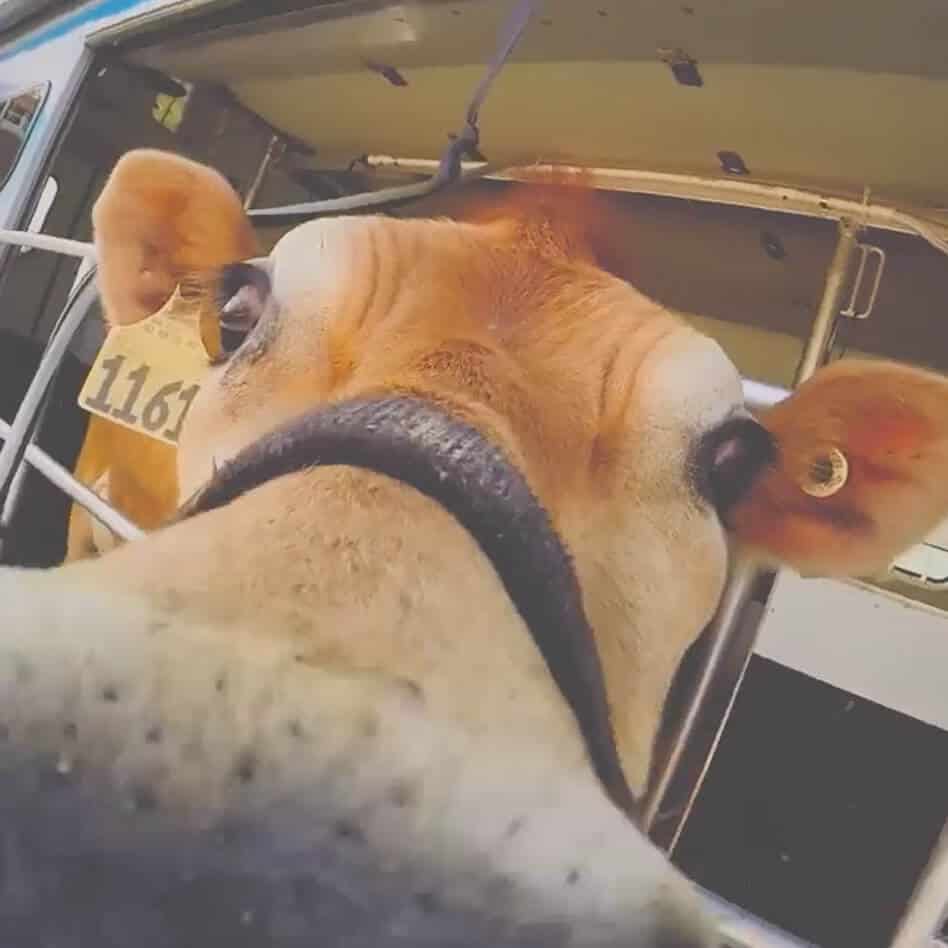Cattle are so frequently equated with America—and with Texas in particular—that it may shock you to learn that cattle aren’t indigenous to North America at all!
In fact, cattle have only been roaming from sea to shining sea for about 500 years, first brought to the country by Spanish conquistadors. Today, we’re digging into a bit of the history surrounding the Texas cattle business and dairy farming!
The History of Texas Cattle Ranching
The story of Texas cattle starts back in 1493, with Christopher Columbus’ second journey to Hispaniola (the island that is split into Haiti and the Dominican Republic). On this voyage, Columbus brought with him several heads of Spanish cattle, along with horses, pigs, and goats. Over the next 200 years, cattle slowly moved west to Central American and north to the modern-day United States, both under the control of ranchers and in wild herds.
By the 1700s, the powerful nations of Spain, France, and England were vying for control of the “new world” (which was, of course, only “new” to the Europeans).
While England had a firm grip on the 13 colonies to the east, Spain and France had each claimed land in the center of this great landmass. Spain controlled much of Central America and modern-day Texas, while France had a grip on a great swath of land from modern-day Louisiana stretching north through what would be come Canada.
To keep the French from overstepping their boundaries from the Louisiana territory into Tejas, the Spanish established six missions along the San Antonio River. These outposts were occupied by priests, soldiers, and civilians, along with 4,800 head of Spanish cattle.
When France lost its territories in 1763 at the close of the French and Indian War, the missions were abandoned. But the Spanish cattle were already well-established, and they continued to roam Texas after their handlers had gone, joining existing herds and creating new ones. They became increasingly wild, and naturally adapted to the demands of the hot, dry environment. They became hardier, and evolved long, sharp horns that let them defend against predators. These are the famous Texas longhorn cattle.
In the late 18th and early 19th centuries, settlers began to round up these cattle and drive them through East Texas to New Orleans for sale. This was the beginning of the Texas cattle industry!
Ranchers set up shop across Texas so they could breed their own cattle and keep them protected from predators and poachers. After the Civil War, cattle ranchers helped the Texas economy to recover, going on great cattle drives to bring their heads of cattle north to Kansas where they could be sent to market by train.
There was such a demand for beef at the time that the longhorn was in danger of becoming extinct. Fortunately, the federal government arranged for the support of a herd at the Wichita Wildlife Preserve in 1927, which still exists today. And private citizens like J. Frank Dobie and Will Croft Barnes worked to promote interest in the breed and save it from disappearing.
Recent genetic testing has confirmed that the famed longhorns are descended from those original Spanish breeds brought over on the Nina, Pinta, and Santa Maria, over 500 years ago.
Today, cattle ranchers still breed longhorns, along with holsteins, brahman, angus, and other cattle breeds. It’s a $12.3 billion industry in Texas, accounting for fully half the state’s commodities.
Dairy Farming in Texas

Before the Civil War, most dairy farming in the United States was subsistence farming. That means the dairy produced was kept to support the family, rather than sold as a money-making venture. Part of the reason for this was transportation difficulty. Without refrigeration or rapid transit, milk couldn’t be transported very far without spoiling.
As cities grew in the late 19th century and city-dwellers without their own farms created a market, dairy farmers established local milk routes to provide milk and butter.
Advances in technology, like a steam-powered bottle washer and pasteurization machines, let dairies expand their production around the turn of the century. While some national brands expanded into Texas in the 1930s, there were still many independent dairies in operation.
Between 1900 and World War II (1939-1945), the demand for dairy exploded. The number of dairy cows in Texas grew by almost 50%, reaching 1,594,000 cows. Today, there are only 595,000 dairy cows in Texas across about 350 dairies. But modern technology, improved herd health, and efficient milking methods help each cow to produce over 4x more milk than cows in 1925.
Fun fact: dairy cows eat about 90 lbs of food per day, and drink 25-50 gallons of water!
Texas is currently the 4th largest dairy-producing state, outdone only by California, Wisconsin, and Idaho (and neck-and-neck with New York, both producing 1.3 billion pounds per month as of June 2021). The Texas dairy industry has an economic impact of $50.3 billion, and employs 253,000 people either directly or indirectly.
Cattle at Barton Hill Farms
You don’t have to go to a dairy or a cattle ranch to get a look at a steer or a dairy cow. At Barton Hill Farms, we have Texas steer and Angus cattle living the good life, eating grass and wandering the pasture. As part of our regenerative farming practices, letting cows graze keeps the grasses healthy by encouraging them to grow a deep root system.
And if you stop by the farm during the Fall Festival, Pumpkin Patch, & Corn Maze during the weekend of November 6th and 7th, 2021, you can learn more about dairy cows during the Mobile Dairy Classroom presented by the Southwest Dairy Farmers Association. Get a milking demonstration and find out how dairy cows turn food into nutritious milk for cheese, yogurt, ice cream, or just for drinking.
Learn more about dairy cows at the Fall Festival. Get your tickets here for the final festival weekend of 2021!
Sources: Texas Historical Commission

